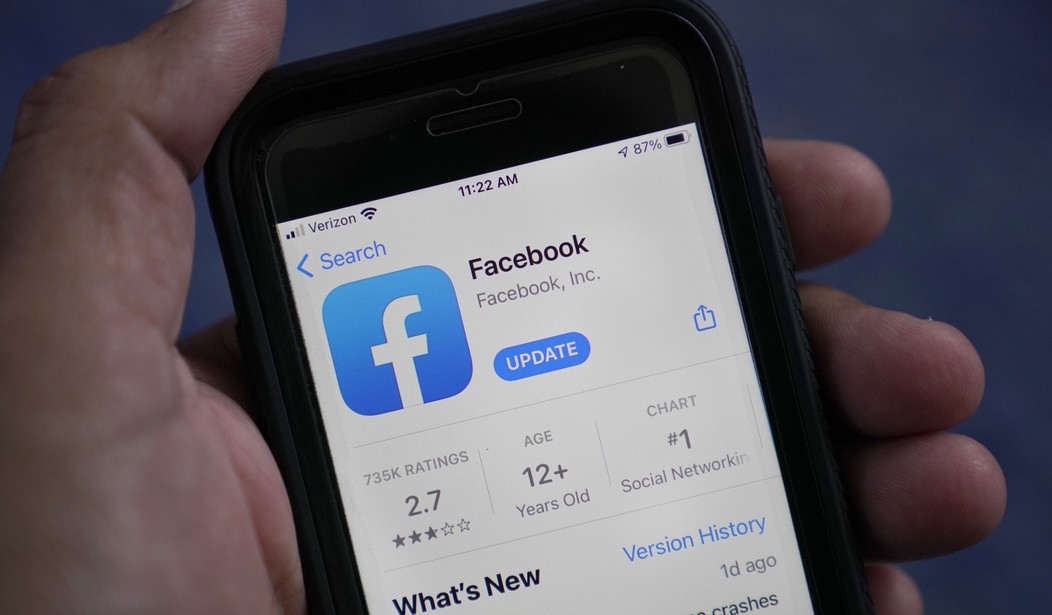Social media is sold to us as an opportunity to connect with others, share our lives, and educate ourselves and our children. But the reality is much darker.
After a series of leaks and confessions by Big Tech insiders, we’re finally learning the truth about how Big Tech designs their devices and social media platforms to keep us hooked. We may think we’re in charge of our experience on social media; in reality, we’re the victims of manipulative efforts to addict us.
As parents, we need to be clear-eyed about the situation. It is time that we recognize that these tools and platforms frequently don’t have the best interests of our children in mind. It is telling that many leaders of the tech industry meaningfully limit how their own kids interact with devices.
At a congressional hearing on social media’s role in radicalizing America, Facebook’s former Director of Monetization Tim Kendall admitted, “We sought to mine as much attention as humanly possible ... We took a page from Big Tobacco's playbook, working to make our offering addictive at the outset.”
Tim Kendall wasn’t wrong to draw an analogy to the heyday of Big Tobacco. We know now that both Facebook and Twitter employ in-house psychology and neuroscience experts whose job is to keep users — including kids — hooked to their screens. In the words of former Google ethicist Tristan Harris, “there are a thousand people on the other side of the screen whose job is to break down the self-regulation you have.” And it is working. As Netflix CEO Reed Hastings once said, his platform’s biggest competitor is sleep.
Many have already sounded the alarm. In 2018, over 50 psychologists sent a letter to the American Psychological Association warning about the “hidden manipulation techniques” social media platforms are using against kids. Then, in 2020, The Social Dilemma debuted to a viewership of 38 million people in the first two months, with tech insiders finally going on record to reveal how companies keep users scrolling — even at the cost of mental health.
Recommended
Kids are especially susceptible to these tactics, and it shows up in the data. Teens spend almost nine hours a day on their devices, not including school or homework time. Fifty percent of teenagers consider themselves addicted to their tech, and 40% report feeling anxiety if they are away from their phones. Nine in ten think spending too much time online is a problem for their generation.
Just as Big Tobacco targeted and addicted preteens and teens to make them smokers for life, Big Tech can significantly alter the brain of adolescents. Studies have shown that during adolescence, the brain is dominated by areas associated with pleasure and reward. When they use these social media apps, there is a release of dopamine that triggers a reward system — leaving them craving more. Their still-developing brains put kids at a greater risk of developing an addiction to technology, and Big Tech is willing and able to exploit that vulnerability to their own benefit.
But it’s not just the apps that are addictive; the content itself can be as well. Social media companies know that rage and sex sell, and the algorithms they’ve developed assume that this type of content will keep users engaged. Even the slightest interest shown in a sexualized image, for example, can adjust a user’s entire feed, eventually transforming the social media experience into a near-constant deluge of sexualized images, unrealistically curated bodies, and even sexually explicit material. That’s exactly how TikTok’s algorithm works.
All of this is troubling enough, but it doesn’t stop there. These “hacks” for maximizing “user engagement” can become onramps for deeper addictions as they expose users to provocative content and habituate them to digital dopamine hits. Is it any wonder that, in a world where kids spend half of their waking hours on social media, fully 90% of teens say they have viewed porn? The average age that kids are first exposed to porn is between 9 and 11 years old, and it’s often not intentional. The majority of young people’s first time watching pornography is accidental. A recent WIRED report found “the demand for ‘TikTok-style’ porn videos, and the app’s superior editing tools, is fuelling the rate at which NSFW (not safe for work) TikTok videos are cross-posted to other platforms, such as Pornhub and OnlyFans.” Sometimes slopes are, in fact, slippery.
Similar to how Big Tobacco relied on the physical addictiveness of nicotine, Big Tech uses innate psychological drives to addict children. Big-Tech’s neuroscientists tap into a variety of innate drives, including those for sex, social affirmation, financial gain, entertainment, and novelty. We live in a “more likes lead to more profit” age, and the most popular and lucrative content is also the most sensational. Big Tech knows that it sells an addictive service that funnels kids to alluring but often unhealthy content — and the truth is finally coming out. We now know we can’t fully trust the tech we use every day to do what’s right for our kids, not as long as Big Tech handsomely profits from our addictions.
So, how do we respond?
First, don’t wait for the government to solve this problem for us. Though studies linking cigarettes to cancer began to appear as early as the 1940s, the purchase of tobacco products by minors wasn’t outlawed nationally until 1992. And considering the ballooning number of lobbyists employed by Big Tech, we can’t rely on regulators to act on our kids’ behalf. If parents want progress on this issue in a timeframe that matters (i.e. - while their kids are still kids), we can’t afford to wait.
In the meantime, we need to rethink our posture towards tech, balancing our enthusiasm with a healthy dose of skepticism. Make sure your children know that some of the brightest minds of the age have designed these products to be addictive, just like Big Tobacco did decades ago.
And lastly, we need to empower parents and children to have more control over their digital experiences. We should work to incorporate tools and practices into our daily lives that put meaningful decision-making power back into the hands of families. We must start taking steps to ensure that technology serves us, and not the other way around.
























Join the conversation as a VIP Member